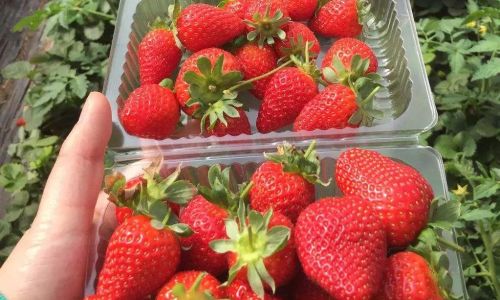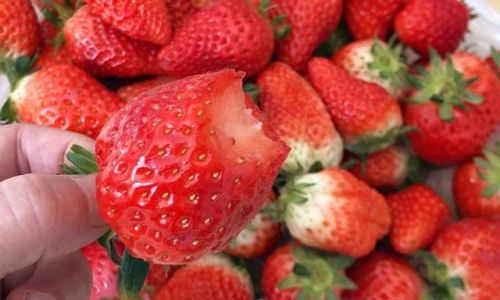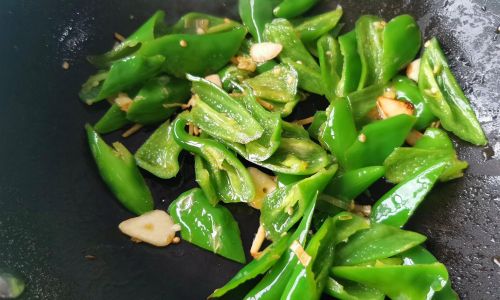Table of content
- A. Refrigeration for Short-Term Use
- B. Freezing for Future Use
- C. Dehydrating for Snacks and Mix-Ins
- D. Making Jam or Jelly
- A. Breakfast and Brunch Ideas
- B. Decadent Desserts
- C. Savory Twists
- A. Strawberry Lemonade
- B. Strawberry Infused Water
- C. Strawberry Wine or Liqueur
- A. DIY Beauty Products
- B. Natural Cleaning Agents
- C. Gardening Hacks
Strawberries, with their vibrant red hue and sweet-tart flavor, are a beloved seasonal treat. However, their perishable nature often leaves gardeners, farmers’ market shoppers, and baking enthusiasts wondering: What happens when you buy or harvest more strawberries than you can eat? This article explores innovative and practical ways to transform excess strawberries into delicious meals, long-lasting preserves, and even non-edible household products. By the end, you’ll view surplus strawberries not as a problem, but as an opportunity for creativity and sustainability.
Preservation Techniques: Extending the Shelf Life of Strawberries
The first step in managing an abundance of strawberries is to extend their freshness. Proper storage can buy you days or even months to experiment with recipes.

A. Refrigeration for Short-Term Use
- Preparation: Gently rinse strawberries under cold water, pat them dry with a paper towel, and remove the green stems.
- Storage: Arrange them in a single layer on a paper towel-lined container. Avoid crushing the berries by placing a second paper towel on top before sealing the container. Stored this way, strawberries can last 3–5 days in the refrigerator.
B. Freezing for Future Use
Freezing preserves strawberries’ flavor and nutrients for up to 12 months. Here’s how:
- Hull and slice the strawberries (or freeze whole if preferred).
- Toss with sugar (1 tablespoon per cup of berries) to retain color and texture, or use lemon juice for a tart twist.
- Spread in a single layer on a baking sheet and freeze until solid (2–3 hours).
- Transfer to airtight bags or containers. Label with the date for easy tracking.
C. Dehydrating for Snacks and Mix-Ins
Dehydrated strawberries make crunchy snacks or additions to granola and trail mix:
- Slice berries thinly and arrange them on a dehydrator tray.
- Dry at 135°F (57°C) for 8–12 hours until leathery.
- Store in an airtight jar away from light and moisture.
D. Making Jam or Jelly
Homemade strawberry jam is a classic way to use surplus fruit. For a basic recipe:
- Mash 4 cups of strawberries with a potato masher.
- Combine with 4 cups of sugar and 1 tablespoon of lemon juice in a large pot.
- Boil for 15–20 minutes, stirring constantly, until the mixture thickens.
- Pour into sterilized jars, leaving ¼-inch headspace, and seal.
Culinary Adventures: From Breakfast to Dessert
Strawberries’ versatility shines in both sweet and savory dishes. Here are recipes to transform your surplus into memorable meals.

A. Breakfast and Brunch Ideas
- Strawberry Overnight Oats: Mix rolled oats with almond milk, chia seeds, honey, and sliced strawberries. Refrigerate overnight for a no-cook breakfast.
- Strawberry Smoothie Bowls: Blend frozen strawberries with banana, spinach, and almond milk. Top with granola, coconut flakes, and fresh berries.
- Stuffed French Toast: Sandwich a layer of strawberry jam between two slices of brioche, dip in egg batter, and pan-fry until golden.
B. Decadent Desserts
- Strawberry Shortcake: Layer sponge cake with whipped cream and macerated strawberries (tossed in sugar 30 minutes before serving).
- Chocolate-Dipped Strawberries: Melt dark chocolate, dip whole strawberries, and sprinkle with chopped nuts or sea salt.
- Strawberry Pavlova: Top a crisp meringue base with whipped cream, sliced strawberries, and a drizzle of balsamic glaze.
C. Savory Twists
- Strawberry Balsamic Salad: Toss mixed greens with goat cheese, toasted pecans, and strawberries. Dress with olive oil, balsamic vinegar, and honey.
- Strawberry Salsa: Combine diced strawberries, jalapeño, red onion, cilantro, and lime juice. Serve with grilled fish or tortilla chips.
Beverages: Sipping on Strawberry Goodness
Transform excess strawberries into refreshing drinks that quench thirst year-round.
A. Strawberry Lemonade
- Blend 2 cups of strawberries with 1 cup of water and strain through a sieve.
- Mix the juice with 1 cup of lemon juice and 1 cup of sugar.
- Add 4 cups of cold water and serve over ice.
B. Strawberry Infused Water
- Place sliced strawberries and mint leaves in a pitcher of water. Refrigerate for 2–4 hours for a subtle flavor boost.
C. Strawberry Wine or Liqueur
For a boozy treat:
- Mash 2 cups of strawberries and combine with 1 cup of sugar and 1 bottle of white wine.
- Let sit for 24 hours, then strain and bottle.
Non-Edible Uses: Beauty, Cleaning, and Beyond
Strawberries aren’t just for eating—their natural acids and aromas lend themselves to household and beauty products.
A. DIY Beauty Products
- Strawberry Face Mask: Mash 5 strawberries with 1 tablespoon of honey and 1 tablespoon of yogurt. Apply for 15 minutes to brighten skin.
- Lip Scrub: Mix crushed strawberries with sugar and coconut oil for an exfoliating treatment.
B. Natural Cleaning Agents
- Strawberry Vinegar Cleaner: Simmer strawberry scraps in white vinegar for 10 minutes. Strain and use to clean countertops (the acid cuts grease!).
- Deodorizer: Place a bowl of baking soda mixed with crushed strawberries in the fridge to absorb odors.
C. Gardening Hacks
- Fertilizer Tea: Steep strawberry scraps in water for a week. Use the liquid to water plants—it’s rich in nutrients!
- Pest Control: Bury strawberry tops near plants to deter slugs (they dislike the texture).
Health Benefits of Strawberries: Why You Shouldn’t Waste Them
Strawberries are nutritional powerhouses. One cup provides:

- 160% of your daily Vitamin C (boosts immunity).
- 3 grams of fiber (aids digestion).
- Antioxidants like anthocyanins, which reduce inflammation.
Freezing or dehydrating strawberries retains most nutrients, so preserved berries are still a healthy addition to meals.
Giving Back: Donating or Sharing Strawberries
If preservation feels daunting, consider these options:
- Local Food Banks: Many accept fresh produce. Call ahead to confirm.
- Community Fridges: Urban initiatives often welcome donations of surplus food.
- Neighbors and Friends: Share the wealth! A handwritten recipe card adds a personal touch.
Creative Crafts and Activities (Especially for Kids)
Strawberries can inspire fun, hands-on projects:
- Strawberry Print Art: Dip halved strawberries in paint and stamp onto paper or fabric.
- Strawberry Bird Feeders: Thread berries onto string and hang from trees to attract birds.
- Growing Strawberry Plants: Use scraps to propagate new plants—place a berry top in soil and watch roots sprout!
Troubleshooting: What to Do If Strawberries Go Bad
Even with the best efforts, strawberries may spoil. Instead of tossing them:

- Compost: Add moldy berries to your compost bin—they’re rich in nitrogen.
- Natural Dye: Simmer spoiled strawberries to create a pink fabric dye.
Conclusion: From Surplus to Sustainability
Managing excess strawberries is an exercise in resourcefulness. Whether you’re whipping up jam, crafting a face mask, or sharing with neighbors, every action reduces waste and honors the fruit’s fleeting season. Next time you’re faced with a surplus, remember: these ruby gems are too versatile to let go to waste. Embrace the challenge, and let your creativity (and taste buds) thrive!
Final Tip: Rotate your preserved strawberries by labeling containers with dates. This way, you’ll always use the oldest batches first, ensuring nothing goes to waste. Happy experimenting!






0 comments